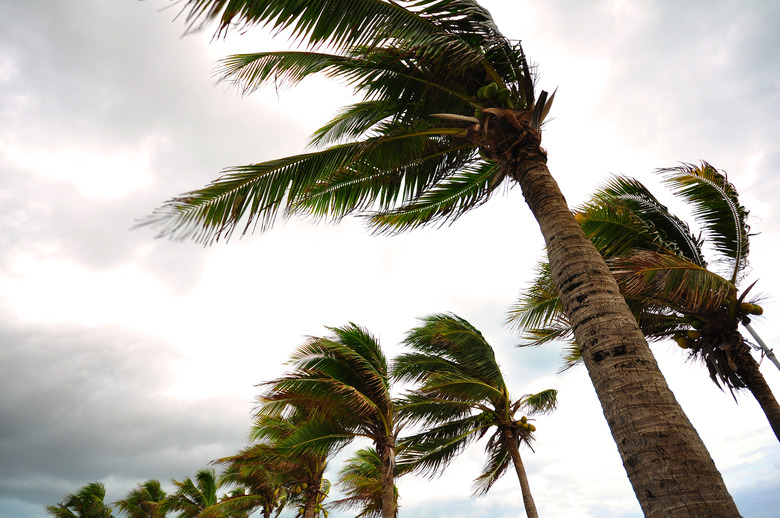The Characteristics Of A Hurricane
Hurricanes are massive weather systems characterized by their wind speed, rotation and progression. Hurricanes often last for more than a week, moving 10 to 20 miles per hour before dying out. They intensify as they move by collecting heat and energy from the ocean. All hurricanes have certain characteristics that can be observed and measured.
Hurricane Formation
Hurricane Formation
Warm ocean water is the fuel for hurricanes. When water evaporates, humid air is forced upward by winds that converge and form clouds. Above these clouds are winds that are forced over them. Weaker winds at the periphery of the storm are gathered up and make the storm grow and influence its direction.
Wind
Wind
Wind is a major characteristic of hurricanes. It blows in the same direction and at the same speed and collects air from the ocean surface. The wind is violently dispersed outward from the storm. Hurricanes are classified by their wind speed by five categories. A minimal hurricane has winds that are sustained at 75 miles per hour. A major hurricane can have wind speeds of 200 miles per hour.
Pressure
Pressure
Hurricanes form because of differences between zones of high and low pressure. The zones collide and produce pressure. A hurricane, once formed, also produces its own pressure system. The central air pressure within is lower than the pressure that surrounds it and lower than the environment through which it moves.
Circulation
Circulation
The flow of cloud circulation in a hurricane can be massive. Hurricanes always have circulation that is clockwise in the Southern Hemisphere or counterclockwise in the Northern Hemisphere. "The Coriolis effect" helps make the spin in hurricanes. The Coriolis effect is a phenomena where the rotation of a free-moving object such as wind is influenced by the spinning of the Earth. Wind in the Northern Hemisphere deflects to the right. Wind in the Southern Hemisphere moves to the left. This is why the circulation of cyclones forms in opposite rotations in the right and left hemispheres.
Cite This Article
MLA
Boone, Dan. "The Characteristics Of A Hurricane" sciencing.com, https://www.sciencing.com/characteristics-hurricane-8652237/. 13 March 2018.
APA
Boone, Dan. (2018, March 13). The Characteristics Of A Hurricane. sciencing.com. Retrieved from https://www.sciencing.com/characteristics-hurricane-8652237/
Chicago
Boone, Dan. The Characteristics Of A Hurricane last modified March 24, 2022. https://www.sciencing.com/characteristics-hurricane-8652237/
